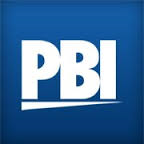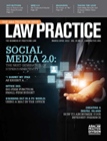LP Magazine – Age over Beauty? Marketing a Law Firm’s Anniversary
 In the July/August 2014 issue of the ABA’s Law Practice magazine, I address the always-sensitive subject of age. In this case, it is about the marketing value of a law firms’ years. It is yet another subject that seems to present itself to me with clients a few times every year. How young is too young? And how old is too old? And is there value in touting age–and more specifically–an anniversary to clients and prospects?
In the July/August 2014 issue of the ABA’s Law Practice magazine, I address the always-sensitive subject of age. In this case, it is about the marketing value of a law firms’ years. It is yet another subject that seems to present itself to me with clients a few times every year. How young is too young? And how old is too old? And is there value in touting age–and more specifically–an anniversary to clients and prospects?
Many law firms have taken anniversaries–literally as short as the one year mark and as long as 200 years–and looked to make them into marketable events. In some cases with good success; in others, it simply does not work. My column provides anecdotal examples of ways your firm may or may not commemorate a business birthday. When you look at all the possibilities, you might be surprised to find that some of the ideas and scenarios fit right into an upcoming anniversary of your law firms’ entry into the marketplace. We often look for excuses to celebrate. We often look for ways to manufacture firm “news.” Somewhere in the middle is the marketing of a law firms’ anniversary. If you are going to invest time, money and effort into such a commemoration, read my column first. It should serve as a guide to ways to ensure the highest level of business development return possible.










